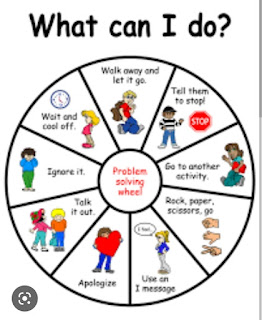Whether its toys-related conflict, a tough math equation, or negative peer pressure, kids of all age face problems and challenges on a daily basis. As a parent, you can't always be there to solve every problem for your children. In fact, this is not your job. Your job is to teach your children how to solve problems by themselves. This way, they can become confident, independent and successful individuals.Instead of giving up or getting frustrated when they encounter a challenge, kids with problem-solving skills manage their emotions, think creatively, and persist until they find a solution. Naturally, these abilities go hand-in-hand with a growth mindset.
How to teach problem-solving skills by age group
*3-5 Years: Use emotional coaching:
Step 1: Name& validate emotions.
Step 2: Let them process emotions.
Step 3: Problem-solving.
- Say, ''show me the hard part.''
- Problem-solve with storybooks (use the ''dialogue-reading'' technique).
- Problem-solve with creative play
*5-7 Years: Teach the problem-solving steps
Step 1: What am I feeling?
Step 2: What's the problem?
Step 3: What are solutions?
Step 4: What would happen?
Step 5: Which one will I try?
- Problem-solve with craft materials.
- Ask open-ended question. ''How could we work together to solve this? ''What do you think will happen next?''
*7-9Years: Break down problems into chunks
- Brainstorm together
- Ask open-ended questions
- Listen
- Show ''The broken escalator'' video+ have a discussion.
*9-11 Years - Use creative problem-solving with prompts (create a jump ramp for cars, design your own game with rules).
- Make them work for it (ask HOW they can earn the money to get what they want).
- Encourage them to put it on paper (problem-solving graphic organizers).
*12+ Years - Play chess together. Players use critical thinking, creativity, analyses of the
board and more.
- Have them learn to code. It promotes creativity, logic, planning and
persistence.
- Encourage to start. meaningful projects
- Apply the soda method. this method can be used for big or small problems
and encourage them to join problem-solving groups like: Debate, Science fair
and others.
NB: SODAS stands for: S- situation
O- options
D- disadvantages
A - advantages
S - situation


















